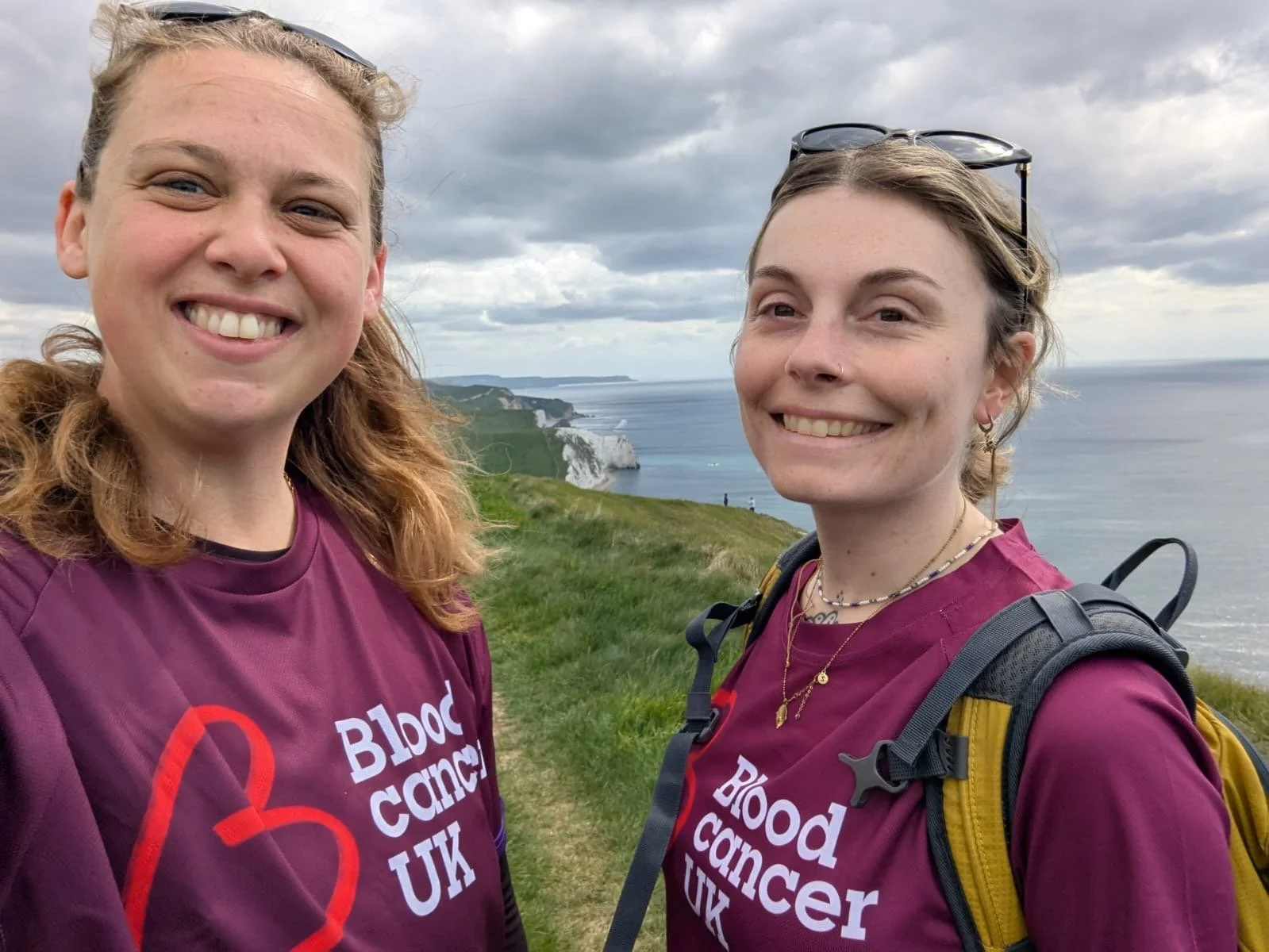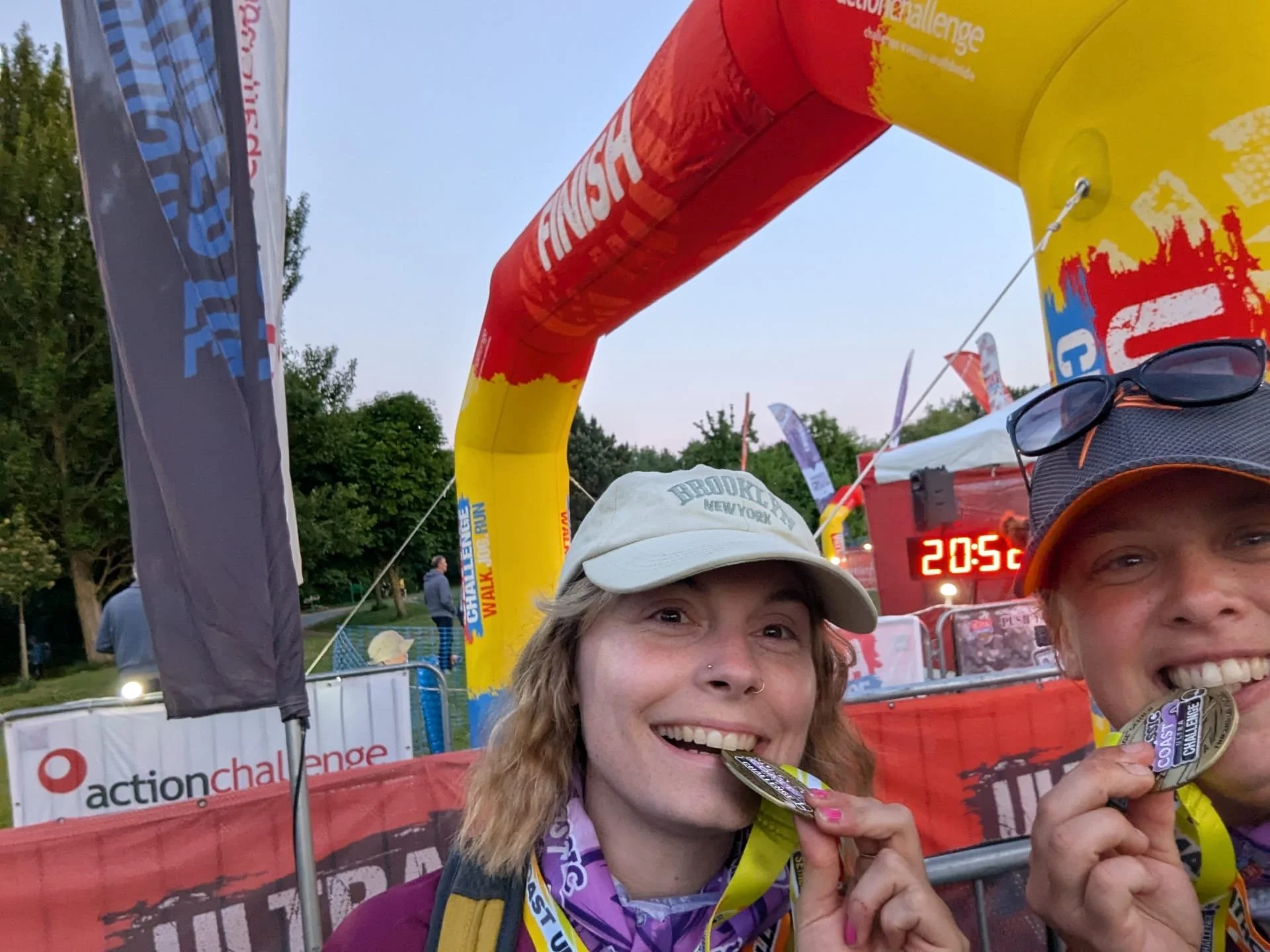
June 2025 Newsletter.
Welcome to our newsletter, with all our updates and some helpful resources for you. In June’s edition we talk about Fibromyalgia
Remember, we are here to help you and you can contact us anytime.
Welcome to our
JUNE newsletter
Hello friends of Ocean Therapy. Welcome to our June newsletter!
Hi friends of ocean Therapy, here’s to a big welcome to our June edition, a newsletter for new and old friends. This month we feature an interesting topic, Fibromyalgia. One condition that we see fairly often in the clinic and try to help and support patients suffering with which is ‘Fibromalgia’, a debilitating condition which will be the main focus of our content for this month.
Well, haven’t we had amazing weather since our last edition! I have now officially had my first 10 minute ‘dip’ in the sea, at around 13 degrees it was a little cool for my liking, but felt I had to get in after hearing of all you brave chaps who swim open water all year round!
In our little community blog here for this month we would like to share the recent fabulous achievement’s by our junior patients, they have all excelled in their chosen activities and we would like to celebrate them all with you. Anna Barker, a patient of many years recently walked / jogged the south West coast with her friend, on one of the hottest days so far this year. After a foggy dull start to the day they soon walked some of Dorset’s most challenging ascents starting the sponsored walk in Weymouth, walking around the top of the White Horse at Osmington over to Lulworth and back along the coast path to return to Weymouth. In blistering sun they completed the marathon walk in just under 11 hours along with some blisters to be proud with by the time they had finished. Anna managed to raise a impressive sum of for her chosen charity ‘Blood Cancer UK’ in the memory of her dear dad who passed away last year.
Ocean therapy supported Anna throughout her walking journey and taped her up to support a previous trauma injury, preventing any instability problems whilst out on the walk.
Anyone who might like to sponsor Anna please go onto the link here: https://www.justgiving.com
We would also like to take this opportunity to congratulate one of Ocean Therapy’s junior patients Kitty Sanders who along with her friend Katy recently won the under 14 category for a musical theatre duet at the Bournmouth performance arts Festival. Kitty as determined as ever, having just come off crutches after a hamstring injury managed to also come third in the musical theatre 13-14 category. Well done girls! Kitty has demonstrated how you can successfully progressively return to your chosen activity if you adhere to your home exercise plan and have bags of patience, we are very proud of our Kitty!! We look forward to hearing more about your dancing achievements very soon!
And lastly but by no means least one of our youngest patients Thomas Worsley who aged just fourteen, recently represented the UK at an equestrian event in Austria riding his beloved “Tumble’. This amazing pair finished 10th after a clear round during the ‘Children on Horse category of the FEl Nations Cup. Thomas , who has ridden since he was three, decided to focus the show jumping discipline four years ago and has now reached the highest level of the sport for his age group. He manages to juggle his school work with regular equestrian events across the country, plus also finds the time to fit in some regular games of Rugby!! Brillant work Thomas ! A name to look out for in the future!
It’s pretty amazing to be able to support these talented young individuals through their competitive journeys and we look forward to hearing of their next set of achievements across their very mixed disciplines.
Please note we Samantha will be taking a well deserved holiday at the end of June / beginning of July with a return to work on the 8th July. Therefore our next newsletter will be in August.
Have a great June and July, keep active and stay well.
Samantha & Boris.
UNDERSTANDING FIBROMALGIA
Fibromyalgia is a long-term condition that causes pain and tenderness throughout the body. Unlike pain from a bruise or a sprain, fibromyalgia pain doesn’t originate from any visible injury or damage to the body. Instead, it’s believed to be related to changes in how the brain and spinal cord process pain signals from the nerves. For many people, the pain can be described as a constant dull ache, typically arising from muscles. To be considered widespread, the pain must occur on both sides of your body and above and below your waist. But it’s not just about pain. Many describe it as a pervasive fatigue, similar to the exhaustion you’d feel from the flu. This isn’t the kind of tiredness that goes away after a good night’s sleep; it’s a lingering, incapacitating fatigue that can interfere with even the most basic daily activities. In addition to pain and fatigue, fibromyalgia can lead to other symptoms. Some people report problems with thinking and memory, often referred to as “fibro fog.” This can manifest as difficulty concentrating on tasks, feeling mentally “hazy”, or forgetting simple information. Fibromyalgia’s symptoms often mimic those of other conditions, which can make it challenging to diagnose. For instance, its pain can be mistaken for osteoarthritis, while its fatigue might be attributed to chronic fatigue syndrome. This overlapping nature means it’s important to get diagnosed properly in order to start managing it effectively. While its exact cause remains a mystery, researchers believe multiple factors, including genetics, infections, and physical or emotional trauma, might contribute. The good news is that, with the right approach and support, many people with fibromyalgia can lead full, active lives.
HISTORY AND PREVALENCE OF FIBROMYALGIA:
Fibromyalgia has been around for centuries, with symptoms described in ancient medical texts. However, it was only in the 1970s that the term “fibromyalgia” was coined, combining Latin and Greek words to describe fibrous tissue and muscle pain. Over the years, our understanding of fibromyalgia has deepened. It’s not and is often diagnosed between the ages of 30 and 60. Its widespread nature highlights the need for increased awareness and understanding in our society. just about tender muscle points; it’s a complex condition with a variety of symptoms. Today, it’s recognized as one of the most common chronic pain conditions, affecting 1 in every 25 people. While fibromyalgia can affect anyone, it’s more prevalent in women
HOW FIBROMYALGIA AFFECTS THE BODY:
Fibromyalgia is a condition that’s more than just about pain; it has a ripple effect on the body, influencing various systems and functions. Here’s a closer look at how fibromyalgia impacts the body: Widespread Pain: The most prominent symptom of fibromyalgia is a persistent pain that spreads throughout the body. This isn’t just any ordinary pain; it’s a deep, throbbing, aching, or burning sensation that can fluctuate in intensity. Fatigue: Many with fibromyalgia experience a profound tiredness that doesn’t go away with sleep. It’s a fatigue that can make even simple tasks seem daunting, affecting daily routines and quality of life. Sleep Disturbances: Despite feeling constantly tired, many fibromyalgia sufferers have difficulty sleeping. They might struggle to fall asleep, experience frequent awakenings, or suffer from conditions like restless leg syndrome. Cognitive Difficulties: Often referred to as “fibro fog,” individuals might face challenges with memory, concentration, and organizing thoughts. It can feel like a cloud that hampers clarity of thought. Digestive Problems: Fibromyalgia can also impact the digestive system, leading to symptoms like bloating, gas, constipation, or even irritable bowel syndrome (IBS). Sensitivity: Many people with fibromyalgia develop heightened sensitivities. This can mean an increased sensitivity to light, noise, temperature, and even touch. Mood Fluctuations: Emotional effects are also prevalent. It’s not uncommon for individuals with fibromyalgia to experience mood swings, anxiety, or depression. The chronic nature of the pain, combined with other symptoms, can take a toll on one’s mental well-being. Stiffness: Morning stiffness, similar to Stiffness: Morning stiffness, similar to what’s experienced in conditions like arthritis, is another symptom. This can last for several minutes to hours, making it challenging to start the day. Understanding how fibromyalgia affects the body is crucial for both those living with the condition and their loved ones.
Fibromyalgia presents a range of challenges that can affect daily life. Physical therapy offers a structured approach to address these challenges, focusing on improving movement, function and overall well-being. This leaflet explains how physical therapy can help in managing fibromyalgia. Of course! Let’s delve deeper into each of the benefits, providing a more comprehensive understanding of how physical therapy can be a game-changer for those with fibromyalgia:
BENEFITS OF PHYSICAL THERAPY FOR FIBROMYALGIA
Pain Management: One of the primary goals of physical therapy is to address the chronic pain that fibromyalgia patients experience. Through a combination of targeted exercises, manual techniques, and modalities like heat or cold therapy, physical therapists aim to decrease pain levels. The emphasis is on understanding the body’s pain response and using therapeutic methods to ease it. Over time, patients often find they can achieve significant pain reduction without solely relying on medications.
Improved Mobility: Fibromyalgia can make even simple movements challenging. Physical therapy focuses on improving the range of motion in joints, ensuring that activities like climbing stairs, reaching overhead, or even turning the neck become smoother. By working on specific muscle groups and joints, therapists can help restore natural movement patterns, making daily life more manageable. l
Building Strength: A body weakened by fibromyalgia can benefit immensely from strength training. Physical therapists introduce resistance exercises, starting with light weights or resistance bands, gradually progressing as the patient’s strength improves. This not only bolsters muscle mass but also provides only alleviates pain but also improves circulation, promoting faster muscle recovery. Techniques such as gentle joint movements and soft tissue massage can help improve mobility and reduce muscle tension.
Pain Management Techniques: Modern physical therapy clinics might also offer innovative pain relief methods like dry needling or laser therapy. l Education and Self-Management: Therapists often provide resources like booklets or videos, ensuring you can continue beneficial exercises at home.
THE EMOTIONAL AND MENTAL BENEFITS Engaging in physical therapy can provide a sense of routine and purpose. Achieving small therapy goals can boost confidence and provide a sense of accomplishment, which can be beneficial for mental wellbeing.
GETTING STARTED WITH PHYSICAL THERAPY The first session typically involves an assessment to understand your current condition and goals. This partnership with your therapist is crucial, and your feedback is invaluable in shaping the therapy plan. better stability to the skeletal system, reducing the likelihood of strains, sprains and falls. Strength training and fibromyalgia : a powerful combo.
Living with Fibromyalgia can feel like a daily battle against pain and fatigue, however strength training might just be the secret weapon that you have been looking for. Research shows that gentle, consistent resistance exercises can improve muscle function, boost energy, and even help with sleep and mood. You don’t need heavy weights. Bodyweight exercises, resistance bands or light dumbbells a few times a week can build resilience without overloading your body. Start slow. listen to your body, Remember strong muscles equals better support and less pain.
Better Sleep: Sleep disturbances are a common complaint among fibromyalgia patients. Regular physical activity, especially under the guidance of a therapist, can help regulate the body’s sleep-wake cycle. By reducing pain and muscle tension before bedtime, physical therapy can pave the way for deeper, more restorative sleep. l
Reduced Fatigue: Constant fatigue can be debilitating. Physical therapy addresses this by promoting efficient muscle function and improving cardiovascular health. As patients engage in aerobic exercises, their stamina increases, leading to a noticeable reduction in daily fatigue. Over time, activities that once seemed exhausting become more achievable. l
Flexibility: Muscle stiffness and rigidity can be particularly distressing in the mornings or after periods of inactivity. Physical therapists incorporate flexibility exercises into the treatment plan, focusing on elongating the muscles and improving joint mobility. Techniques like dynamic stretching or even yogainspired poses can be introduced, helping to combat the stiffness that fibromyalgia often brings.
Breathing: We often recommend our patients to remember to ‘Breathe’, the ‘Box Breathing’ technique as we have demonstrated with many of our patients helps us to use the most effective tool of relaxation that we own! It helps to reduce anxiety and stress by using all of the lung capacity and helps to avoid shallow breathing which initiates the fight r flight nervous system.
We have added a couple of breathing technique videos which are quick and easy for you to follow, give it a go We think you will be amazed at how well you will feel afterwards.
Contact Boris on : 01305 831726 to help with a strengthening program.






